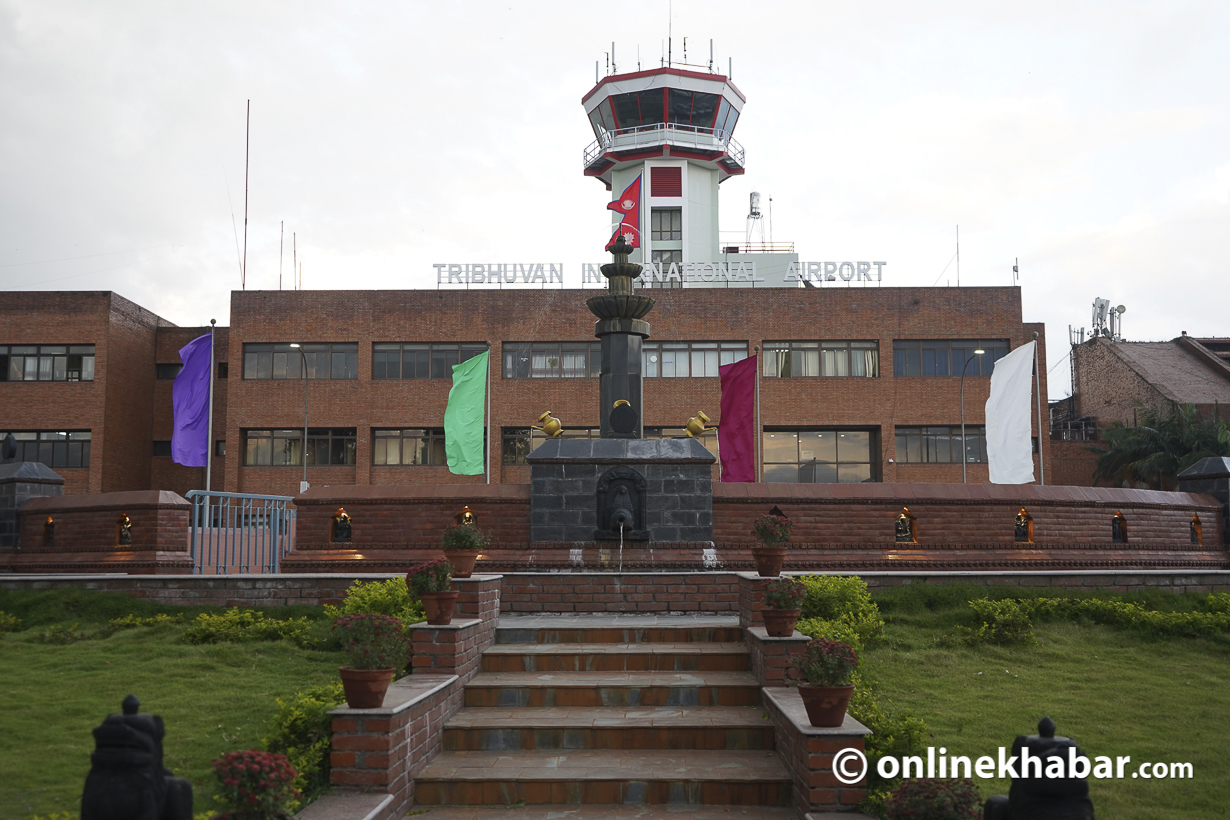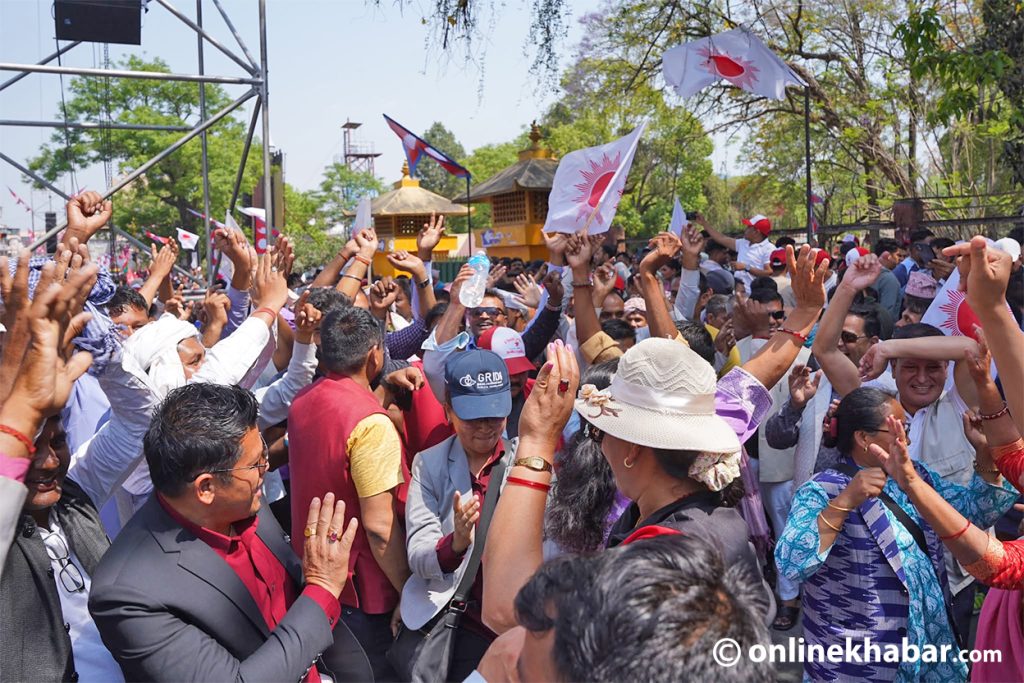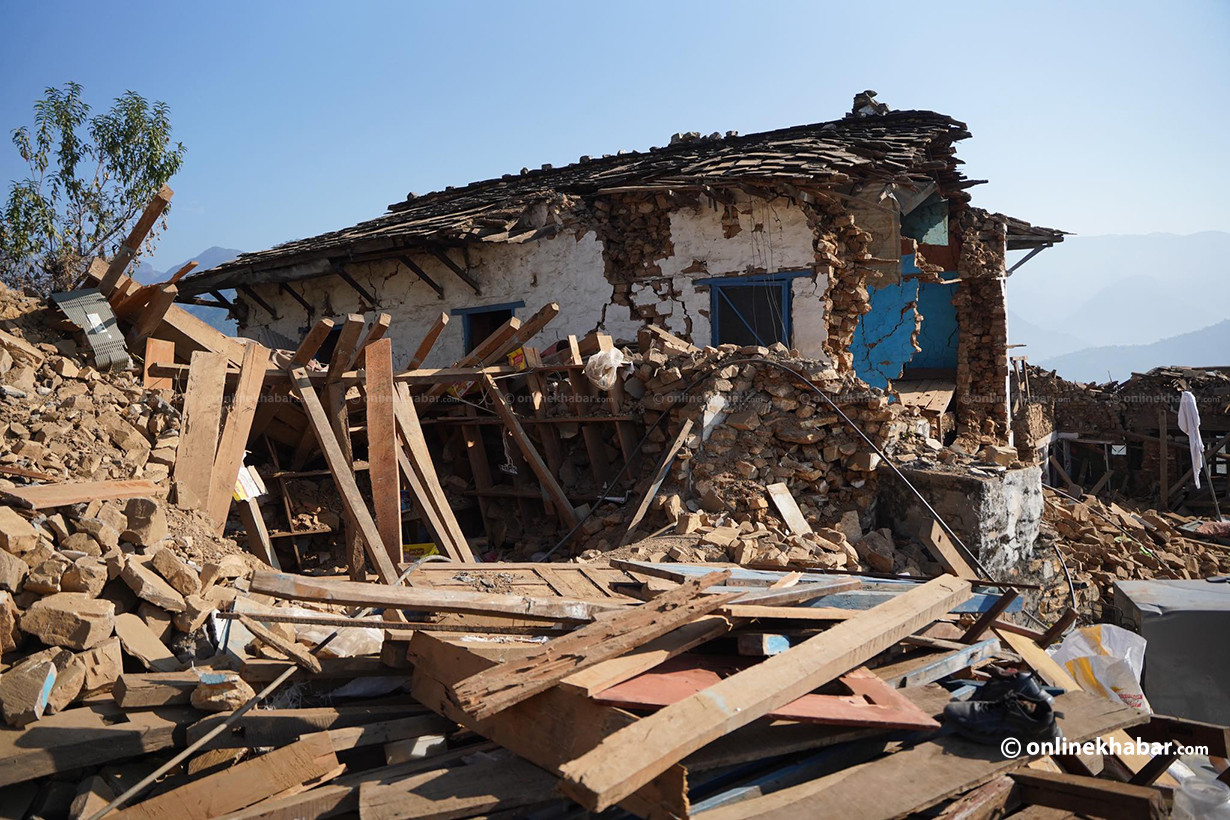
Kathmandu, July 20
Almost one quintal (100 kilograms) of gold, released by the Tribhuvan International Airport Customs Office, was confiscated in Sinamangal in Kathmandu.
Director General of the Department of Revenue Investigations, Nawa Raj Dhungana, said that about 80 to 100 kilograms of gold were recovered during an operation conducted on the basis of special information by the Department of Revenue Investigation on Wednesday.
“This may be the gold of the greatest value recovered in Nepal so far,” he told Onlinekhabar.
The gold, which was hidden inside the brake shoes of motorcycles and scooters, passed the customs check on Wednesday and the information about it reached the Revenue Investigation Department at 2 pm. Following that, a raid was conducted by the department which confiscated gold worth Rs 1 billion.
According to sources the gold was brought into Nepal by Ready Trade Private Limited and its owner Dilip Bhujel and two others were arrested.
In the preliminary investigation, it has been revealed that Ready Trade has imported brake shoes several times before. Sources said the company had imported brake shoes 22 times in the past two months. This has raised suspicions among investigators who are looking if the company was smuggling gold in the same manner before.
The Department of Customs and the Airport Customs Office has shown a lack of awareness regarding the gold that successfully passed the customs check. Shobhakanta Paudel, the Director General of the Department of Customs, stated that he had no information about the gold that was seized.
Arun Pokharel, Chief Customs Administrator of the Airport Customs Office, is currently on leave. In his absence, Narad Gautam has taken over the responsibility of customs.
Adaptive smugglers

On January 23, 2018, a group led by Chudamani Upreti aka Gore lost 33 kilograms of gold brought from the UAE. The investigation took a serious turn after carrier Sanam Shakya was killed during the search.
After a comprehensive investigation, a high-level committee determined that Upreti’s group had illicitly smuggled approximately 38 quintals of gold over a span of four years. This case exposed the involvement of police officers, customs staff, and a significant smuggling racket.
Following this incident, the rate of gold recovery has decreased sharply but on Wednesday, the Revenue Investigation Department recovered almost 100 kilograms of gold.
Each gold-related operation carried out by the Nepal Police became mired in controversy over the last five years. The money given to the informant went down too resulting in the police not confiscating gold in such large quantity.
While the authorities were conducting operations, the gold smugglers proved to be highly adaptable and resorted to new techniques. They started concealing gold by coating it onto various materials, making detection more challenging. Consequently, authorities were only able to intercept and seize smaller amounts of gold, often brought in semi-solid forms, during their operations.
The last time the customs office confiscated gold in large amounts was on December 23, 2022, when they caught a Sudanese citizen with 19 kilograms of gold during a routine inspection. This marked the largest amount of gold ever intercepted by customs at the airport. To conduct a thorough investigation, the customs authorities handed over the Sudanese national, who was arrested with the smuggled gold, to the Central Bureau of Investigation (CIB).
During ‘Operation Golden Dawn’ conducted by the Directorate of Revenue Investigation in India, 101 kilograms of gold were seized. The gold travelled to India from Nepal. This operation highlighted a new method of smuggling gold from Nepal by Sudanese nationals. However, it was concerning that the police in Nepal did not demonstrate proactive efforts in investigating the matter further. This lack of proactive involvement raised concerns about the effectiveness of law enforcement in combating gold smuggling activities.
Despite efforts by the Valley Crime Investigation Office in Nepal, they had not achieved success in resolving the case. However, the situation changed when gold from Nepal began getting seized in India. This development caught the attention of revenue and security officials in India, prompting them to take a keen interest in the matter. The increased vigilance and cooperation between the two countries’ authorities may lead to more effective measures to combat gold smuggling and related criminal activities.
As per the annual report of the Directorate of Revenue Intelligence (DRI) of India for the fiscal year 2021/22, the country previously faced significant challenges with gold smuggling through air routes. Nonetheless, the report highlights that the increased vigilance of law enforcement agencies has led smugglers to adopt innovative methods for their illegal activities involving gold smuggling.
“After increasing surveillance at the international airport, gold is being smuggled via land,” says the report. “Gold is coming in from Bangladesh, Nepal, and Myanmar.”
DRI officials concluded that the amount of gold coming from Nepal has been increasing recently.
“The demand for gold is always increasing, as long as the demand continues to increase, gold smuggling will not stop until then,” says Basanta Bahadur Lama, a member of the high-level committee formed to investigate gold smuggling in 2018. “What will change is the style these people smuggle gold.”
Gold recovery gone down

No significant amount of gold has been recovered in Nepal in the last five years. The police had been claiming that gold smuggling had stopped due to the operation launched after the 33.5 kilograms gold incident.
Experts have noted that there has been a decline in the activity of the police and a subsequent decrease in the amount of recovered gold. This reduction in effectiveness can be attributed to various factors, which have impacted law enforcement’s ability to combat gold smuggling effectively.
According to data from the Police Headquarters, the amount of gold seized by the police has shown a downward trend over the past few fiscal years. Specifically, in the fiscal year 2017/18, the police confiscated 200 kilograms of gold, followed by 51 kilograms in 2018/19, 30 kilograms in 2019/20, 32 kilograms in 2020/21, 23 kilograms in 2021/22, and 5 kilograms in 2022/23.
The gold seized in this manner was not of substantial quantities. These are the specifics regarding the gold carried by labourers returning from abroad.
“Gold cannot be caught without information. For this the police need to work hard and invest in the right people, says former AIG of Nepal Police Rajendra Singh Bhandari. “We cannot claim that if we were not confiscating gold, the smuggling had stopped.”


























